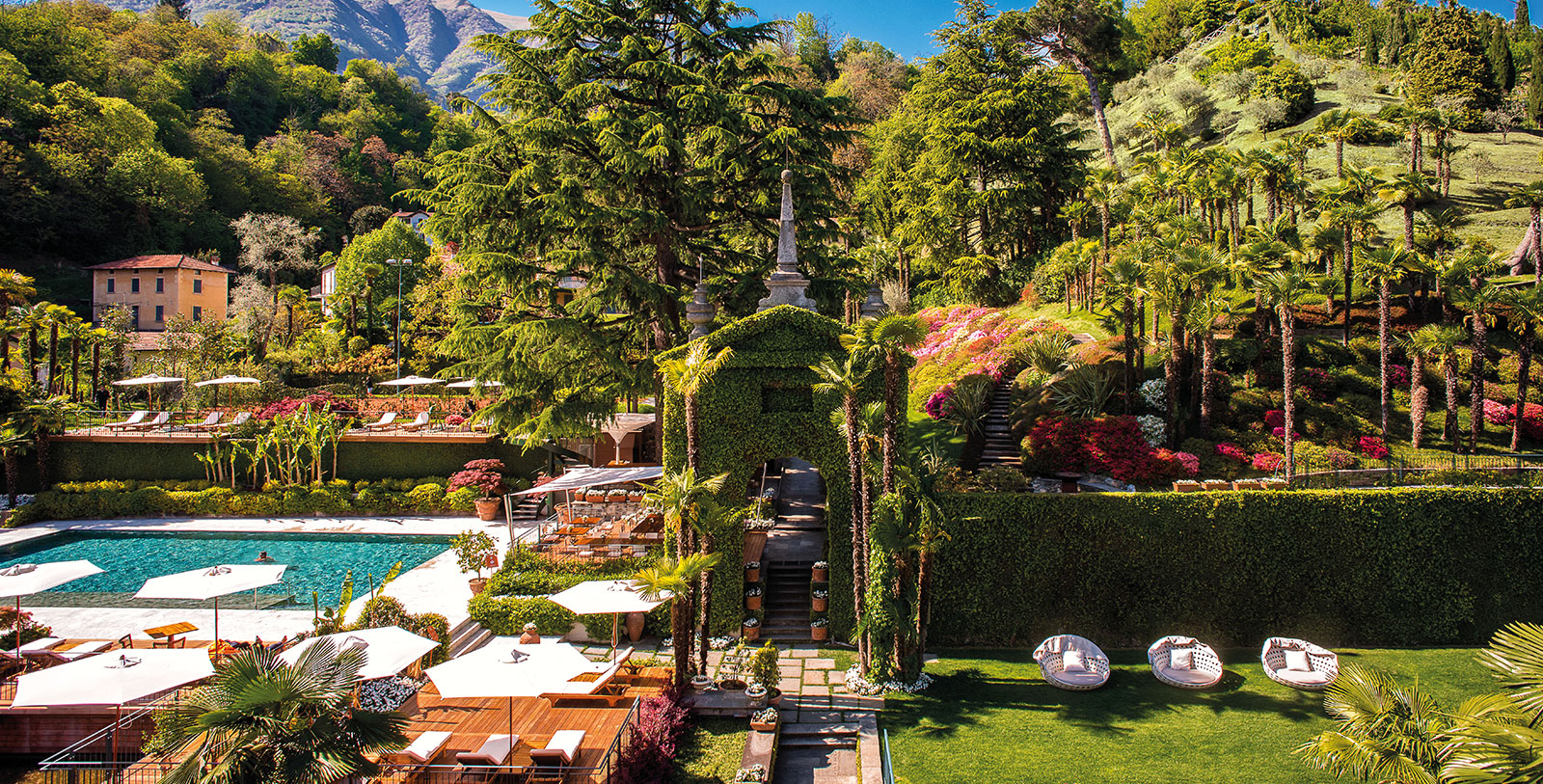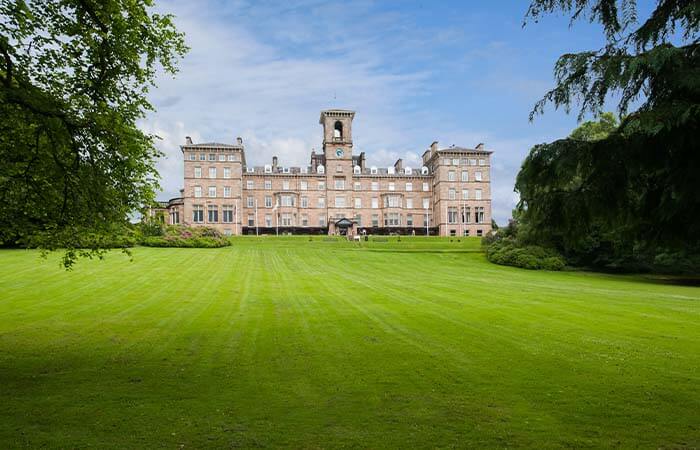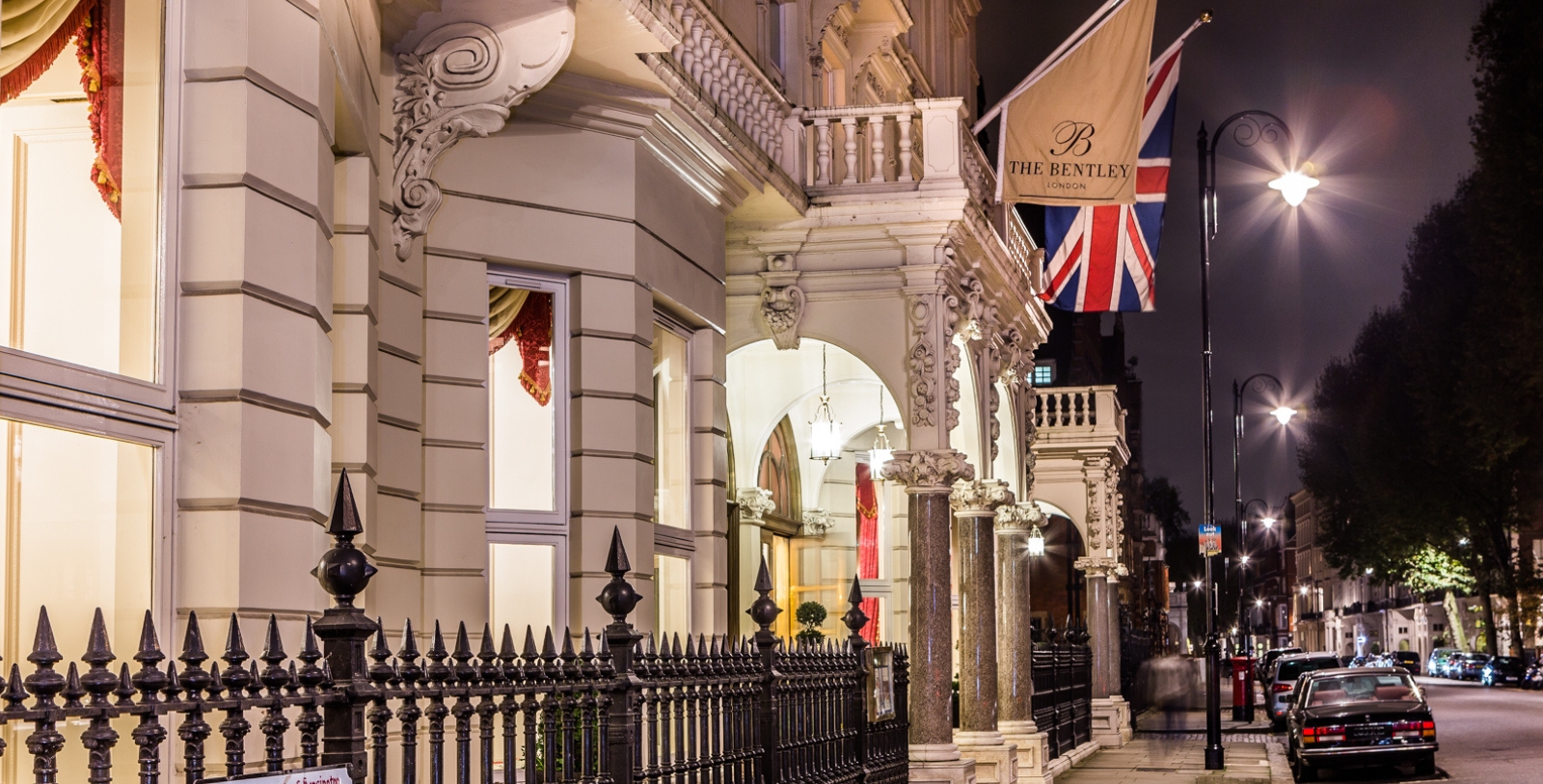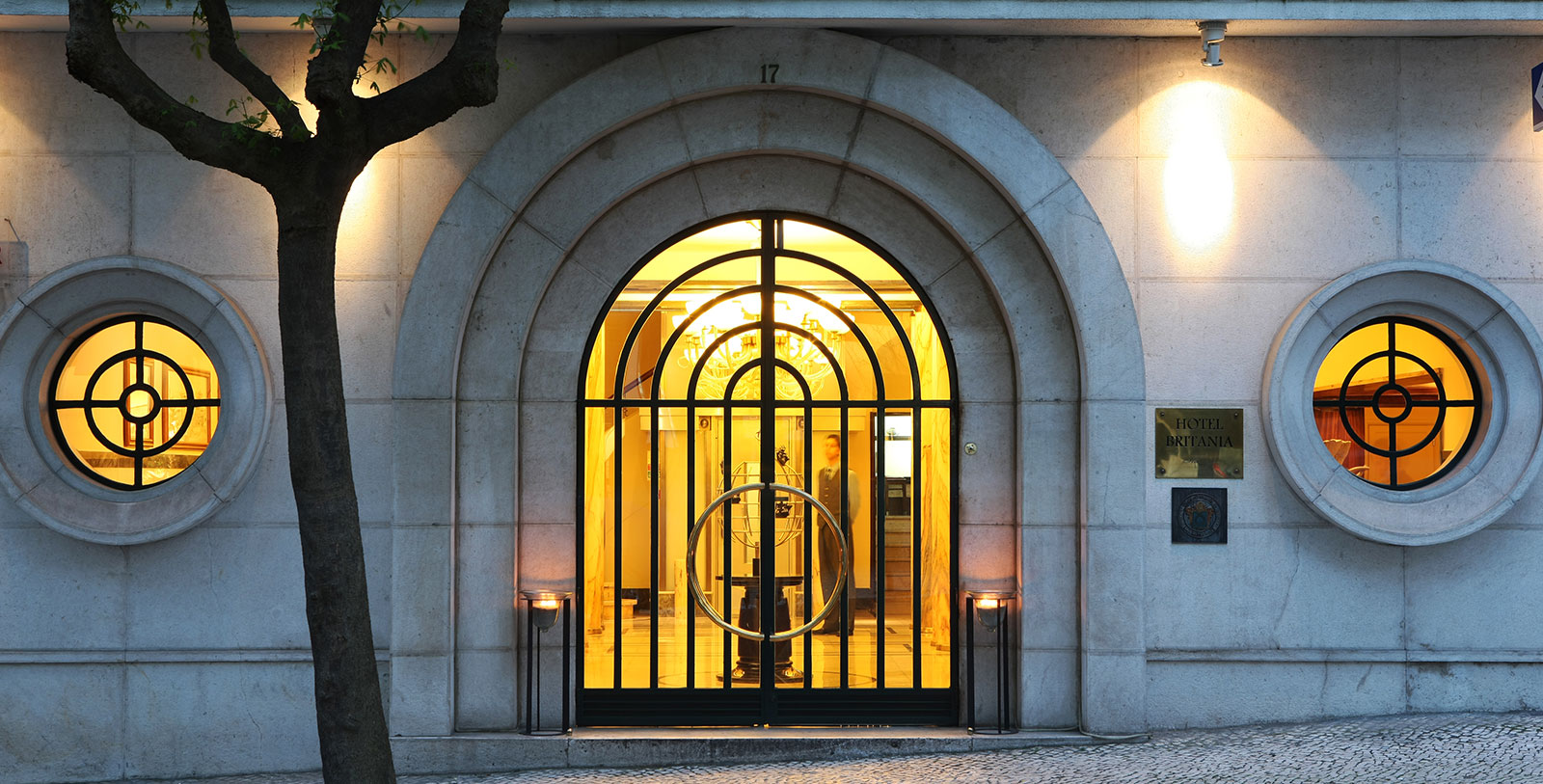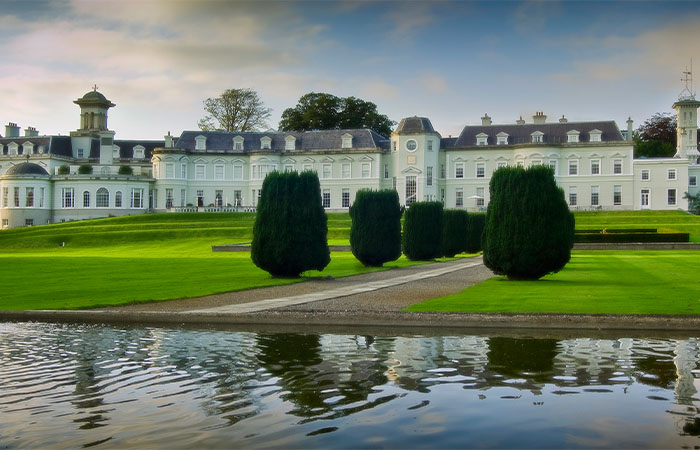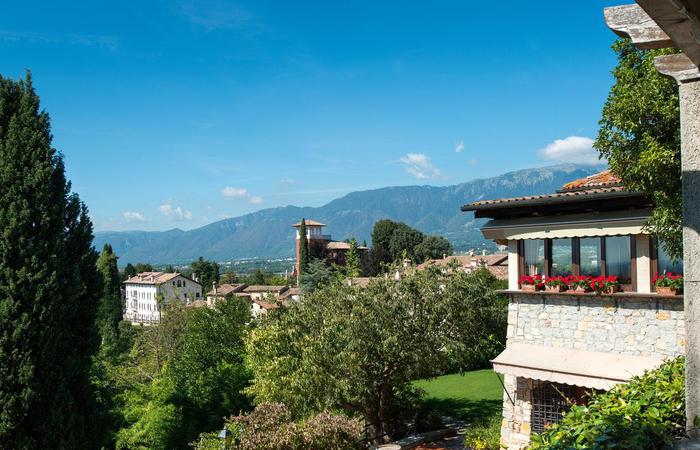Receive for Free - Discover & Explore eNewsletter monthly with advance notice of special offers, packages, and insider savings from 10% - 30% off Best Available Rates at selected hotels.
The 2022 Top 25 Historic Hotels Worldwide Most Magnificent Gardens
The 2022 Top 25 Historic Hotels Worldwide Most Magnificent Gardens List Announced
April 29, 2022, Washington, D.C. -- Historic Hotels Worldwide offers cultural heritage travelers easy access to many of the world’s most beautiful historic gardens. Representing five continents, the legendary hotels featured here in the 2022 Top 25 Historic Hotels Worldwide Most Magnificent Gardens highlight diverse horticultural landmarks, from private estate gardens of medieval Irish castles and Mexican haciendas to lush UNESCO World Heritage Sites at Villa Borghese in Rome and the Gardens of Versailles in France. Numerous life-long memories of special occasions celebrated in the gardens of historic hotels include romantic getaways, romantic proposals, honeymoons, anniversaries, and family reunions. This list is an invitation to explore, experience, and grow blossoming memories in the beautiful gardens of historic hotels.
Dromoland Castle Hotel (1014)
County Clare, Ireland
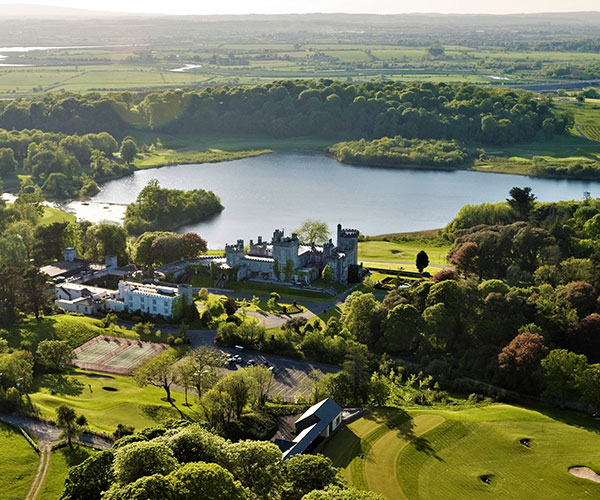 |
No small part of the ancient Dromoland Castle Hotel’s magic is its 450 acres of magnificent, landscaped gardens. Dating to 1014 and inducted into Historic Hotels Worldwide in 2011, Dromoland Castle has been welcoming guests since the 16th century. The gardens visitors see today are based on designs by Andre Le Notre, who planned the Gardens at Versailles. Dromoland Castle’s gardens feature a picture-perfect lily pond and sundial, a beautiful walled garden, and a dramatic yew tree gallery that dates to 1740. In the early 1990s, new Head Gardener Dorothea Madden took up the task of restoring the walled garden, which had become overgrown. At the same time, the lawns had fallen into grassland and the pathways were barely visible. The roses were in situ but needed attention. These lawns and rose gardens were also brought back to their former glory by Madden. To preserve the walled garden’s stone arches and keep the walls intact, the only machinery which could be used within the garden was a small tractor. Much of the hard labor was done by hand, pulling and digging out briars and other pernicious weeds. The brick for the repairs to the outer walls came from a demolished Georgian house in the city of Limerick. Repairs took two years. The beauty and fortitude of the walled gardens in the 21st Century is very much a testament to the careful work by the gardening team, supported by investment from hotel management, and a testament to the previous generations of designers and gardeners who put hard work and creativity into the gardens at Dromoland Castle. |
Kilkea Castle (1180)
Castledermot, Ireland
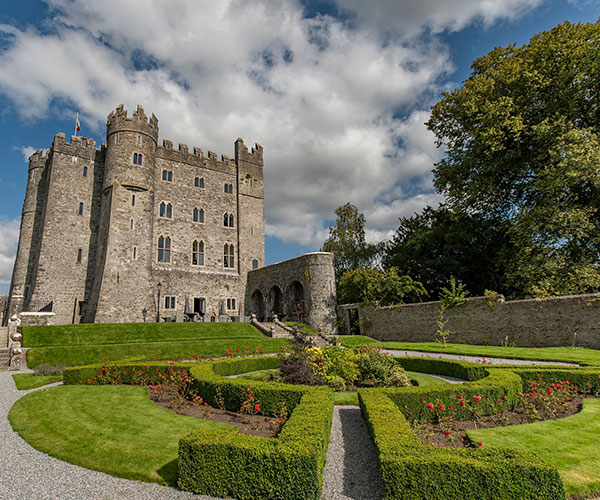 |
Kilkea Castle in Castledermot, Ireland, is set on 180 acres of its own wonderful woodland, gardens, and golf course. With a history dating back to 1180, Kilkea Castle captures the mystical charm of a 12th-century majestic Castle with the overwhelming allure of timeless sophistication and style. The historic castle was inducted into Historic Hotels Worldwide in 2020. Its beautiful architecture is matched by its lovely gardens, lawns, and wildlife. The castle's rose garden in particular is spectacular, framing the 12th-century castle with red and pink blooms. Plantings of geometrically exact, manicured topiary shrubs and rose bushes create a European-style garden right off the main Keep. A square, impeccably kept grassy lawn lies below it. Parallel to the lawn, hidden by shrubs and trimmed topiary, is a vegetable garden. Around all these gardens is a historic stone wall, naturally curated by lichens, mosses, and vines. Enjoy a view of the Castle gardens from the Dining Rom of Kilkea Castle or the outdoor patio, a favorite choice for events planners. Walking through the paths throughout the estate, guests discover the joy of the abundant springtime Bluebells. Trees are a mixture of Native Oak, Ash, Holly and Elder. There are also Buttercups, ground Ivy, Lords and Ladies, and so many more Ferns among the ground Flora. |
Barberstown Castle (1288)
Kildare, Ireland
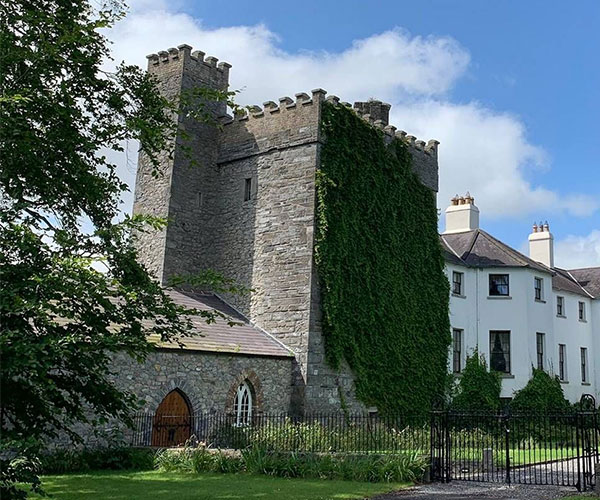 |
At Barberstown Castle, guests of this cherished hotel in County Kildare, Ireland, are invited to create new memories and bask in the splendor of the pristine, 20 acres of meticulously maintained gardens. Since 1288, Barberstown has had 37 owners, all of whom had the foresight to protect its heritage and character. Inducted into Historic Hotels Worldwide in 2011, Barberstown was one of the first Irish country houses to display its splendor to the outside world when it opened as a hotel in 1971. Musician Eric Clapton owned and maintained the castle and the grounds between 1979 and 1987. A treasure to be cared for, Barberstown Castle grounds are bursting with natural wildlife and a wide variety of trees, flowers, and shrubbery. In spring, bright pops of crimson and gold daffodils stand out in stark contrast against ancient, gray stone walls, and in the fall, orange rust-colored leaves and scarlet vines add an atmosphere of autumnal romance to the landscape. Naturally, romance finds its home here in the Barberstown Castle gardens, which are a popular wedding venue. The castle is also known for its regal weeping willow tree, a favorite spot on the estate for proposals. |
Hotel Hacienda de Abajo (1493)
Tazacorte, La Palma, Spain
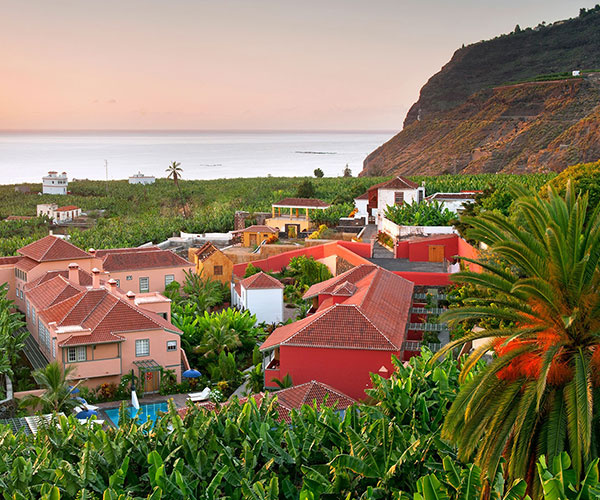 |
A member of Historic Hotels Worldwide since 2021, the Hotel Hacienda de Abajo on the isle of La Palma in the Canary Islands is rich in both history and agricultural wonders. The estate dates to the founding of the town of Tazacorte in 1493, and the historic Hotel Hacienda de Abajo’s landscaped, European-style gardens date to the 1500s. It was during this early era that the Spanish estate in the Canary Islands grew into a successful sugar cane plantation. The first cultivated gardens – apart from the sugar cane fields – were located at the center of the plantation and contained mostly fruit trees. The first banana trees to arrive at the island were tended to at the Hacienda de Abajo around the start of the 16th century. The descendants of those first trees still exist at the hotel today, residing in its walled garden. The hotel restored the nearly 500-year-old garden in 2012, updating it with new pathways and a traditional pond featuring a 19th-century French fountain. An explosion of color and fascination, the garden guests see today has a wild atmosphere, full of rare botanical spices from all over the world and ones unique to the archipelago. Guests are encouraged to linger in the gardens and relax, and the hotel can provide a tour if requested. Many of the guestrooms feature a garden view, some with a terrace. |
Aranwa Sacred Valley (1500)
Urubama, Cuzco, Peru
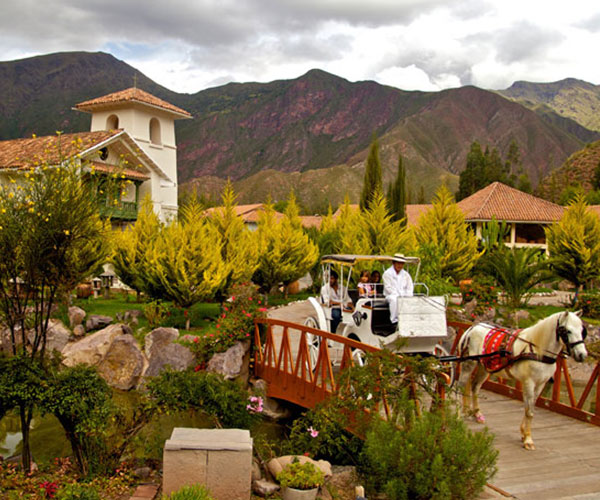 |
By the banks of the Urubamba River, on the road to Machu Picchu, the Aranwa Sacred Valley hotel is a meticulously restored 17th-century hacienda that combines grand colonial architecture with the culture of ancient Incan civilizations. Notably, Aranwa Sacred Valley, a member of Historic Hotels Worldwide since 2012, contains historic structures that date back to the 1500s. Now restored to its former glory, the hotel is one of the most popular vacation destinations in the heart of Peru’s Sacred Valley. Aranwa Sacred Valley is set in a stunning landscape of mountains and lakes, surrounded by the Urubamba Mountain range. It is a sanctuary for nature and nature lovers, who are thrilled by the sights of wild llamas roaming the hills and gardens blooming with indigenous vegetation. The estate gardens can be enjoyed while walking through the winding paths, around the lake and pools, or from a guestroom balcony or terrace. In addition to flowering gardens – including the orchid garden—and ornamental trees, Aranwa Sacred Valley’s organic vegetable garden provides fresh produce and herbs that the hotel chefs select for their menus at the Pukawi Gourmet Restaurant. |
Sofitel Legend The Grand Amsterdam (1578)
Amsterdam, Netherlands
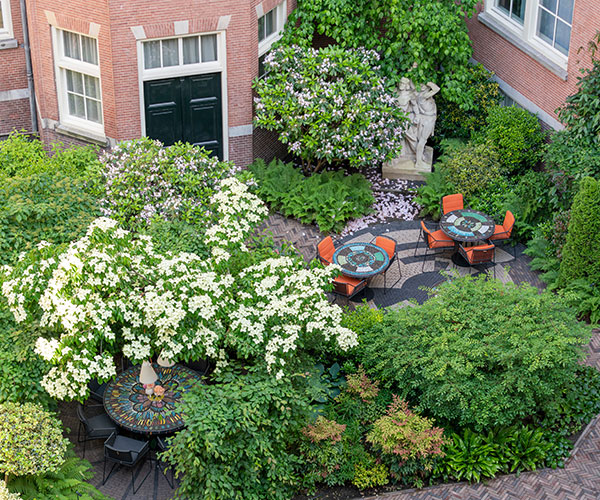 |
The Garden Terrace is a gem, a beautiful courtyard garden of Sofitel Legend The Grand Amsterdam, dating back to the early 1400s. Before the historic structure was transformed into cohesive guest lodgings in 1578 and inducted into Historic Hotels Worldwide in 2018, the site of today's luxury hotel consisted of two convents for the orders of St. Catherine and St. Cecilia. The religious sisters founded the first garden, and it was kept throughout the centuries as the building evolved around it. Renovated and restored significantly in the centuries since, the garden today owes its beauty and architecture to Marion Faver, a well-known French garden architect, who updated the garden in 2016. The vegetation is now concentrated around six different plateaus, which are all designed in different shapes and colors. The plants and flowers are planted in such a way that when the flowering season starts, a different plant is in bloom every week. The water feature is the only thing left from the previous garden. Marion Faver took this water feature as the starting point to create the curves in the garden. Wherever guests sit in the garden, they continuously have a different view of the water feature and the sculpture of the lady in it: 'LA NÉRÉIDE,' sculpted by Dutch artist Daphné Du Barry. The terrace is surrounded by historical red brick walls and retains many of its authentic Amsterdam School-style features. The location lends itself perfectly for a relaxing drink, a fresh cup of coffee, a business lunch, an intimate dinner, and even The Grand Afternoon Tea. When the weather permits, table service of restaurants Bridges, Oriole, and The Flying Dutchman is extended to the Garden Terrace. |
Hacienda de los Santos Resort & Spa (1685)
Alamos, Mexico
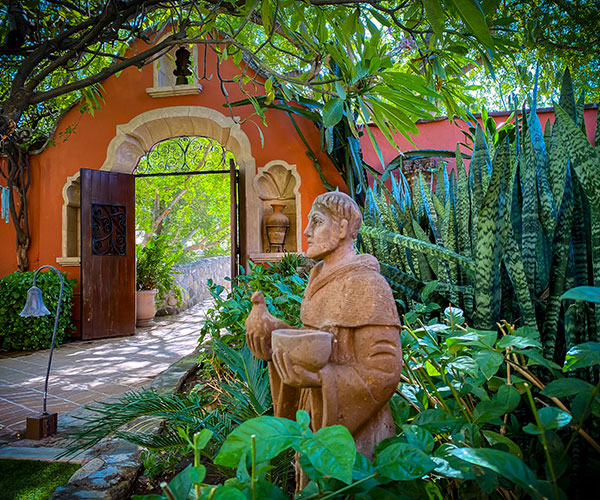 |
Discover the luxurious Hacienda de los Santos Resort & Spa in Alamos, Mexico. Set in the foothills of the Western Sierra Madre, this unique boutique hotel resides within the quaint city of Alamos, which is a designated National Monument of Mexico. Family-owned and operated, the 'House of the Saints' is comprised of three colonial-style mansions that date to the 17th century. In 1989, the new owners began a project to redesign the gardens. In previous centuries there was a large, formal European-style geometric garden as the focal point. These gardens were unsustainable for environmentally conscious management, and the new garden was designed and constructed with plantings that would do well in the desert or tropical zone of Mexico. The largest garden area was designed by an American landscape designer who was well known in Southern California. Joe Delgado provided the overall design. Today, the estate features an extensive collection of various palms, succulents, at least ten types of cacti, and important deciduous trees, including eucalyptus, nacapul, and camochi (similar to Banyan or 'Strangler fig'). The hotel installs flowering or seasonal plants throughout the year to add color. Walkways, lined with grasses, flowers, and art, meander through the estate and lead guests on a tour of the region’s diversity. The hotel is in a “tropical” climate for half the year, and in a “desert” climate for the other half, and the garden’s appearance changes to reflect those climates. Hacienda de los Santos Resort & Spa was inducted into Historic Hotels Worldwide in 2015 and won Historic Hotels Worldwide Best Historic Hotel for the Americas at the Historic Hotels Awards of Excellence in 2021. |
Tivoli Palácio de Seteais (1787)
Sintra, Portugal
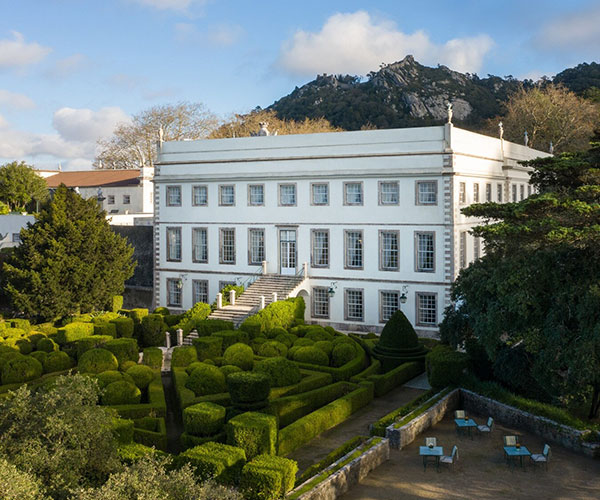 |
Built on the orders of the Dutch consul Daniel Gildemeester, the Tivoli Palácio de Seteais in Sintra, Portugal, was built between 1783 and 1787 on lands granted by the Marquis of Pombal. The consul chose to build his house on an elevation, so that he could enjoy the gorgeous landscape of the Sintra hills. Among the first decorative plantings at the new Seteais Palace were fruit trees. After changing hands several times, the Seteais Palace has been used as a luxury hotel since 1954, and many of its original features have been meticulously preserved for future generations to admire. This grand historic destination underwent a massive renovation in 2009, and Tivoli Palácio de Seteais was inducted into Historic Hotels Worldwide in 2016. The gardens evolved over the centuries to meet the needs and preferences of the people living there. Original to the 19th century is a topiary maze that guests can navigate today. The edible garden in the 21st century offers the hotel chefs a variety of herbs and over 20 lemon trees with which to craft a cocktail or meal for visitors. Guests are welcome to stroll the grounds and may even spot the hotel cooks finding the right ingredients for the day's menu. Among the Tivoli Palácio de Seteais gardens' most magnificent flowering plants are white and pink camellias. Sintra is famous for camellias, which grow abundantly due to the region’s high rainfall, acidic soil, and mild climate. This destination is also home to a large nursery that supplies the palace hotel with lush greens and blooms. |
The K Club (1832)
Kildare, Ireland
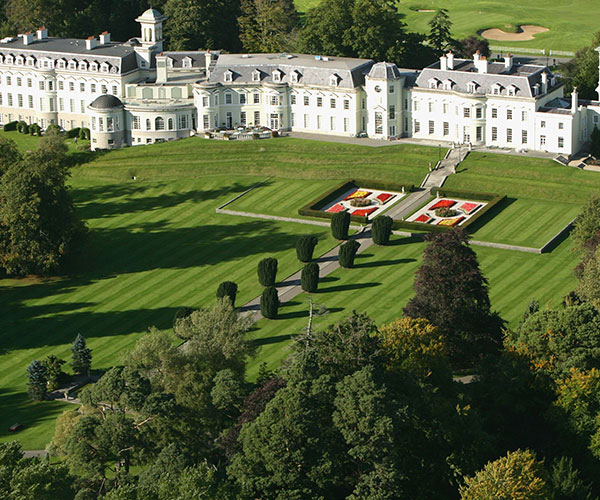 |
The K Club, a member of Historic Hotels Worldwide since 2014, dates its palatial buildings to 1832 but the estate was established by a local nobleman in the 6th century. Its formal gardens that guests can visit today were developed in the 19th century, when wealthy wine merchant John Barton purchased the estate and developed the land to be his primary residence. The gardens have many unusual species of trees, including Lawson cypress and a tulip tree, as well as elm, pedunculate or common oak, and white willow trees. Shrubs and flowers grow in abundance along the walkway, including the Straffan Snowdrop, a white spring flowering bulb unique to the estate and discovered in the 1880s by the head gardener, Frederick Burford. A new breed of narcissus, Cill Dara, was also introduced in November 1992. The garden walkway continues across Inis Mór Island, on to the arboretum, and the hidden pond. Among the arboreal pleasures is a Weeping Beech tree, planted along the 16th green of the Ryder Cup Golf Course to mark the accession to the throne of King Edward VII of England in 1901. Other distinguished trees include a Giant Redwood, the largest growing tree species in the world. |
Hôtel Le Louis Versailles Château - MGallery by Sofitel (1854)
Versailles, France
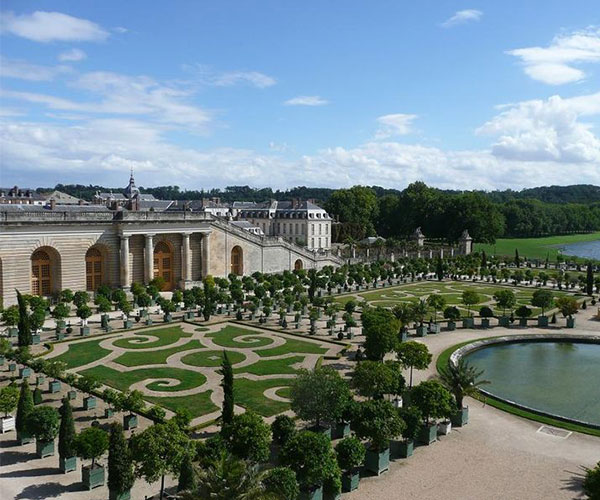 |
Hôtel Le Louis Versailles Château - MGallery by Sofitel sits before the resplendent Château de Versailles, the magnifique palace and gardens of the French royal court throughout much of the 17th and 18th centuries. During that time, the land that the hotel now occupies belonged to the estate, with beautiful sprawling gardens covering the area and mesmerizing the countless guests who traveled to visit the king. The building of Hôtel Le Louis Versailles Château - MGallery by Sofitel, a member of Historic Hotels Worldwide since 2018, dates to 1854. A segment of the gardens was set aside for a new military building, which was later transformed into a luxury hotel for visitors eager to explore grand Versailles. Restored in 2017, the facade's modern design took direct inspiration from Château de Versailles itself and the Versailles gardens influenced the interior: hues of gold and emerald green —emblematic of the colors of the Versailles Garden—define the hotel’s lobby. Other design elements reinforce the notion that guests are traversing the cone-trimmed vegetation of Versailles’ brilliant landscape. The hotel is a mere 200 meters from the UNESCO World Heritage Site that set the bar for magnificent gardens for centuries to come. Designed by legendary landscape architect André Le Nôtre, who created the classic French-style garden now seen around the globe, the gardens at Versailles feature an “open system of axial pathways extending as far as the eye can see and punctuated with flowers and low hedges, flower beds, small streams, large lakes and fountains.” |
Great Southern Killarney (1854)
Killarney, Ireland
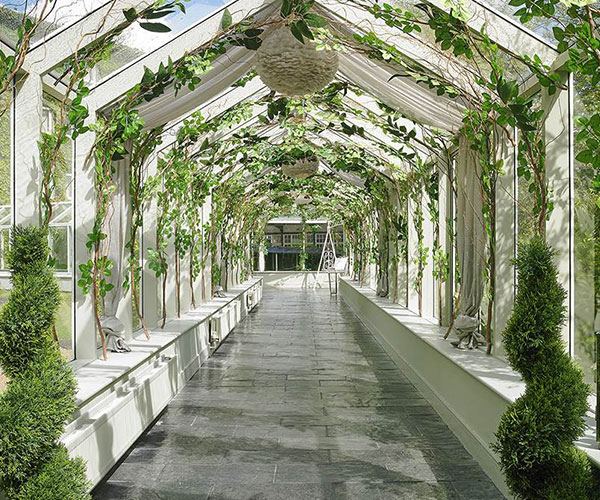 |
It is unusual for a town center hotel to have extensive gardens, yet the Great Southern Killarney is fortunate to keep six acres of picturesque, mature gardens to the rear of the historic hotel. Beautifully landscaped gardens, fountains, and pathways offer guests a tranquil setting for a family picnic, an evening stroll, photoshoot, or exquisite outdoor wedding celebration. Some of the plantings date to the early 1800s, decades before the hotel was built in 1854. A perfect example of this is the hotel's row of six Common Lime trees. Prior to the land being acquired by the Great Southern and Western Railways, which were the original owners of the hotel, it was owned by local politician, Lord Kenmare. Lord Kenmare enjoyed a direct view of the gardens from his home and instructed his gardeners to plant two parallel rows of Common Limes. In the centuries since, one row of these Common Limes was removed, but the other remains to this day. Other historical trees include a Monterey Cypress, dating to the early 1800s, and a Lawson Cypress, dating back to the 1960s. The garden also hosts beautiful trees including Golden Irish Yew, Sycamore, Japanese Cherry, Sawara Cypress, Japanese Maple, English Oak, and Silver Birch. In the late 1960s, the cast and crew of the film Ryan’s Daughter (1970) were based in Great Southern Killarney, and every evening, the director and his assistants would review their footage from that day's work from a room with magnificent views of the gardens. For guests and visitors, the hotel recently installed a trail through the garden and interpretive plates (explaining their age, species, and origin) on 10 of the garden's most magnificent trees. The hotel recommends visiting the garden any time, but April, May, and June are the best times to see the blossoming cherry trees. |
Oatlands Park Hotel (1865)
Weybridge, England
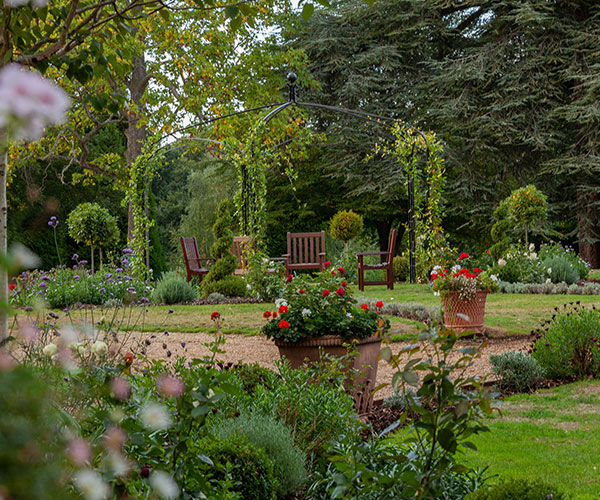 |
Overlooking Broadwater Lake and with far-reaching views over the Surrey countryside, Oatlands Park Hotel in Weybridge, England, stands within 10 acres of parkland and contains many beautiful gardens and historic plantings. Oatlands Park Hotel was originally the site of a grand Royal Tudor Palace, home to the kings and queens of England. Through the centuries prior to it being a hotel, the royal families invested in the land and its cultivation. In 1630, King Charles I appointed John Tradescant the Elder as ‘Keep of His Majesty’s Gardens, Vines and Silkworms’ at Oatlands. Tradescant bought rare plants from around the globe for the Surrey estate, before his son succeeded him in the role in 1638. Charles I’s third son Henry, 1st Duke of Gloucester, was born at Oatlands and the ancient cedar tree which stands beside the main drive of the hotel today is thought to have been planted to honor his birth. The tree was one of the first to be imported to the estate from Lebanon. Records indicate that after the English Civil War, all that was left of the royal court at Oatlands Park were the garden walls. Eventually, the nobility rebuilt the estate and re-established its gardens. Today, guests can walk the estate’s stone pathways through classic English gardens – bursting with bright colors, from the green lawns to the flower plantings – and dine with a garden view. Some guests may also want to visit the pet cemetery of a former occupant, the Duchess of York, who ordered its creation on the estate in the early 1800s when she desired a quiet resting place for her beloved dogs. |
The Sofitel Winter Palace Luxor (1886)
Luxor, Egypt
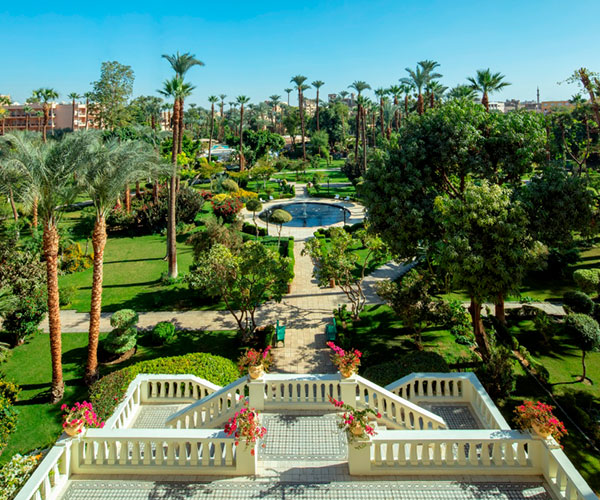 |
The story of the gardens at The Sofitel Winter Palace Luxor begins in 1886, when the hotel was built by Italian J.S. Crozzo. Perched on the Nile River amid luxuriant tropical gardens and ancient temples, the hotel in its early days was supplied with vegetables and fruits from its own gardens. Ducks and chickens, bound for the kitchens, could also be seen meandering in the gardens. Guests throughout its history include illustrious figures, such as Winston Churchill, Agatha Christie, and King Albert I of Belgium. The historic hotel was inducted into Historic Hotels Worldwide in 2014. Today, this 10-acre garden is kept for its beauty as well as its fruits, and features over 50 species of trees, some of which are over 100 years in age. The trees in the gardens have been documented and each tree is tagged, stating its species and year planted. An ished tree, a holy Egyptian tree, was planted close to the Pavillon entrance in summer 2009. According to some myths, the end of the winter solstice rituals included the ‘splitting’ of the ished tree. Walking through the hotel grounds, guests will also encounter banana, orange, and lime trees, as well as a variety of exotic flowers. This vast variety of flora attracts many species of birds, and there is even a family of eagles that delight guests. The Winter Palace garden invites guests to relax and explore the rich culture and lush, natural beauty of the Nile. |
Fairmont Banff Springs (1888)
Banff, Alberta, Canada
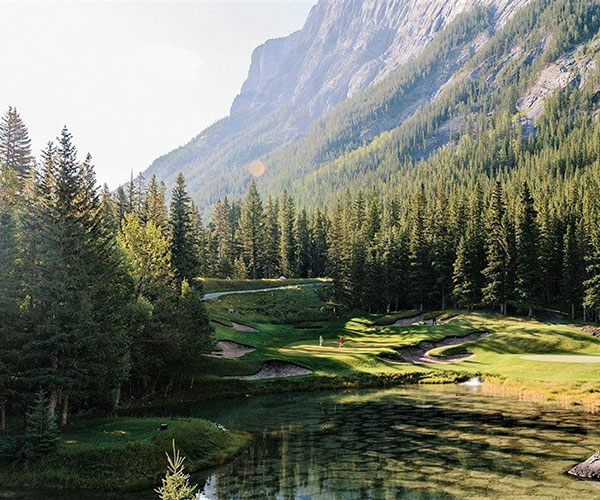 |
One of Canada’s most prestigious holiday destinations, the Fairmont Banff Springs has an incredibly gorgeous garden terrace. The hotel itself is a luxury stop in the heart of Banff National Park, a UNESCO World Heritage Site, and nicknamed the “Castle in the Rockies.” This hotel, inducted into Historic Hotels Worldwide in 2018, has provided guests with incomparable access to the beauty of the Canadian mountainside and all it has to offer since opening in 1888. On the garden terrace, the verdant flora of this magnificent space radiates through the bucolic majesty of the surrounding Banff National Park. Guests will adore the fresh mountain air that wafts throughout the terrace grounds, as they stroll among its wealth of colorful flowers. Countless weddings are frequently held within the gardens, for its picturesque setting is nothing short of spectacular. Its inherent natural beauty has even inspired the Canadian Directory of Federal Heritage Designations to recognize it as a “character-defining element” of the Fairmont Banff Springs. Beyond the hotel, look for wildflowers including the prairie crocus, western wood lily, yellow lady's slipper, Indian paintbrush, and wild rose. |
Sofitel Rome Villa Borghese (1890)
Rome, Italy
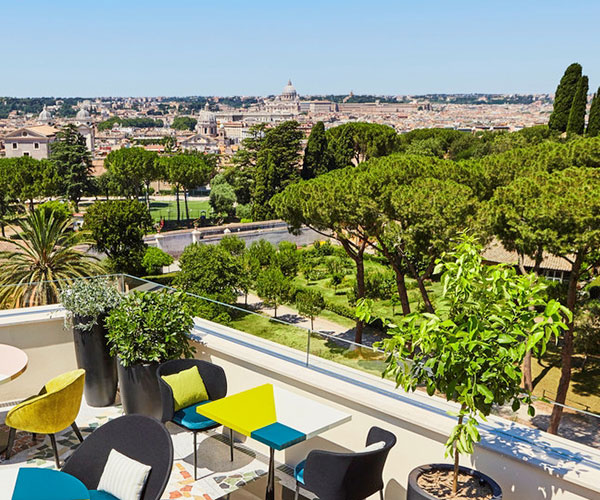 |
The Sofitel Rome Villa Borghese in the Historic Center of Rome – a UNESCO World Heritage Site that includes Vatican City and the Colosseum – derives its name from the historic public park that resides just steps away. The Sofitel Rome Villa Borghese hotel was inducted into Historic Hotels Worldwide in 2018 and the hotel itself was constructed in 1890. The magnificent “Villa Borghese” gardens are located across the road and extend for 198 acres. The history of this magnificent garden dates to the early 1600s, when Cardinal Scipione Borghese of the powerful Borghese dynasty desired to construct an impressive manor and landscaped estate atop the famed Pincian Hill. The nobleman specifically hoped its grand architectural appearance would emphasize the family’s prestige. After hiring leading architects to design the palace, the Cardinal partnered with a renowned landscaper named Domenico Savino de Montepulciano to transform the surrounding grounds into a gorgeous series of lavish gardens. At first, Borghese had operated the site as his own private vineyard but envisioned its future as a tranquil nature preserve where he could both hunt and relax. The landscape architect Montepulciano manifested the Cardinal’s vision magnificently, installing a series of extravagant fountains, sculptures, and hedges around the palace. Today, the Villa Borghese is a spectacular park that is open to the public and only a short walk from the historic Sofitel Rome Villa Borghese. |
Dalen Hotel (1894)
Telemark County, Norway
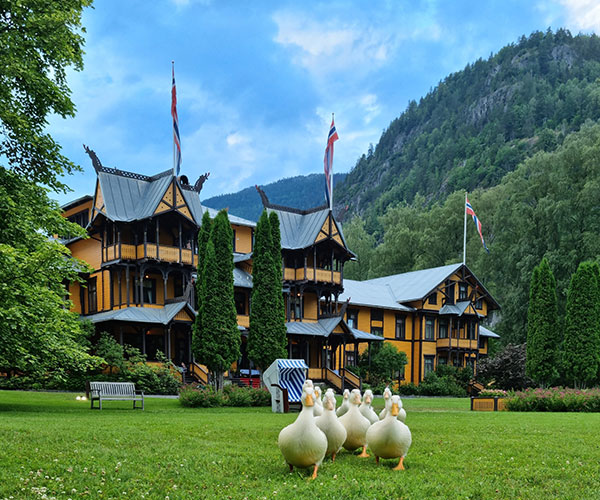 |
The Dalen Hotel in Telemark County, Norway, is known as “the hotel from the fairytales.” Designed by Haldor Larsen Børve, a German-educated architect versed in Swiss style, the hotel exhibits architectural details plucked from traditional medieval churches. Dalen Hotel, which was inducted into Historic Hotels Worldwide in 2012, is adorned with opulent details like dragonheads and soaring spires. This beautiful architecture is set upon equally elegant gardens, which benefit from a warm spring and summer climate that is rare in the rest of Norway. While warmer climates may allow for more extensive gardening projects during the spring and summer, the long, cold winters of the Nordic region still reach Dalen Castle. With that in mind, the garden at Dalen hotel is unique in this context, featuring the perfect balance between cultivated exotic plants and wild local fauna. The hotel's gardener is charged with caring for 55 varieties of flowers and trees. The most historic planting at the estate is a grand sycamore maple that was planted at the inauguration of Dalen Hotel on September 8, 1894. The hotel's beautiful garden undulates toward Lake Bandak and the amazing Soria Moria Sauna. Steep mountainsides delve into deep waters, creating a dramatic surrounding for Dalen Hotel's garden. Guests can enjoy the gardens by relaxing on the terrace overlooking the garden and Lake Bandak or strolling through the estate. The gardens provide a range of outdoor activities including croquet, cornhole “Dalen Dragon Edition,” and – of course – making friends with the hotel’s most popular residents, the ducks of Dalen. The ducks enjoy free reign of the castle gardens and can be seen gallivanting around the estate throughout the warmer season. |
Hacienda Santa Rosa, A Luxury Collection Hotel (1897)
Santa Rosa, Yucatán, Mexico
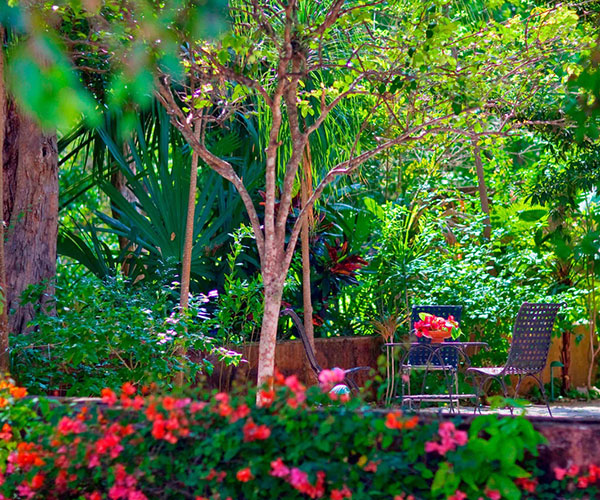 |
Hacienda Santa Rosa, A Luxury Collection Hotel in Yucatán, Mexico, was formerly a private estate and features uniquely carved columns, ornately furnished gardens, and evening campfires. The estate was once one of the most successful fruit plantations in the region. It was fully restored in 1998 as a luxury hotel and inducted into Historic Hotels Worldwide in 2016. Today, there is a botanical garden located in the historic fruit plantation grounds with over 200 species of plants, several of which are native to the Yucatán Peninsula. These ornate gardens are beloved by guests looking for a beautiful stroll, and the onsite vegetable garden includes ingredients used in the hotel’s restaurant. The hotel's signature cocktail, “The Last Cocktail,” is an exquisite mix of gin, pear nectar, lime juice, sparkling wine, and a unique syrup infusion made with rosemary grown in the hotel’s own botanical garden. Along with fruit production, the Hacienda also once produced sisal, which was used in the manufacture of strong textiles such as rope. Guests today can visit the areas where sisal production once took place, as they now constitute the grounds of the hotel’s gardens and corrals. The open patios and garden guestrooms mean that the fragrances and colors of the hacienda’s blooms surround visitors. Beyond the estate, Hacienda Santa Rosa is surrounded by other beautiful natural wonders—such as the Calcehtok Caves—as well as the rich archeological sites of Oxkintok and Uxmal. |
Hotel Villa Cipriani (1550)Asolo, Italy
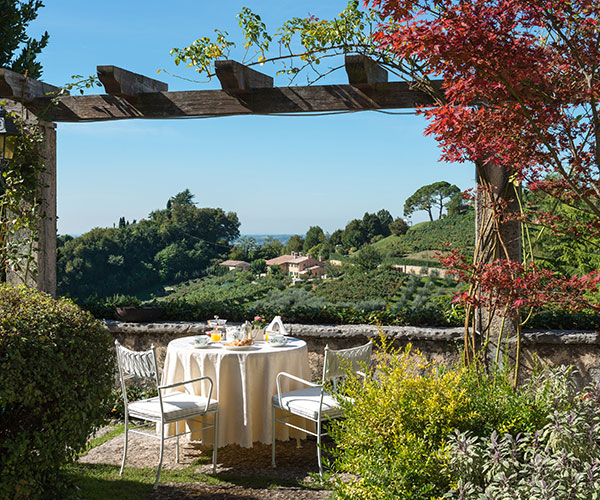 |
Located in the rustic town of Asolo, Italy, this magnificent historic hotel first opened as a beautiful Italian villa during the Renaissance. Converted into a luxury hotel in the early 1970s and named Villa Cipriani at the same time, it was inducted into Historic Hotels Worldwide in 2016. Looking back 400 years, Villa Cipriani and its first gardens were designed by Italian architects of Andrea Palladio’s school in 16th century. Palladian villas were originally built as leisure second homes where wealthy Venetians would spend summers away from the heat of the lagoon. The gardens were places where social life was conducted, conspiracies were plotted, and romances bloomed. The idea of an English-style garden (as opposed to Palladian) was conceived and executed in the 1960s, when Rupert Edward Cecil Lee Guinness, the Lord Iveagh, acquired the hotel and preserved it as a country getaway. He hired a hospitality leader, Giuseppe Cipriani, to help plan and manage the new boutique hotel. Recognized as a Garden of Excellence by the American Horticultural Society, their English garden through the decades has maintained its original style while preserving the estate’s historic landscape. It remains a stunning terraced garden overlooking the surrounding woods and the mountains, the "thousand horizons" for which the town of Asolo is famous. Visitors walking the grounds will come across persimmons, cypresses, laurels, maples, and many flowering bushes. Fragrances to note include tulips and roses in springtime, and fruits from the pomegranate tree in autumn. Among famous figures who have enjoyed the beauty of the garden include actors, such as Marcello Mastroianni, Vittorio de Sica, and Orson Wells, as well as royal families and tycoons. The movie Ripley’s Game (2003) with John Malkovich was filmed at the hotel estate, too. |
Haaheim Gaard (1907)
Haaheim Uggdal, Hordaland, Norway
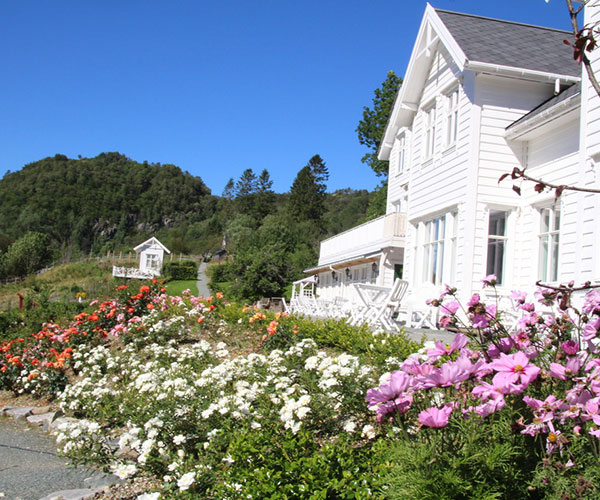 |
The estate grounds of the historic Haaheim Gaard hotel were first permanently settled around 400 A.D., when early Norse began to build and change the landscape. While gardens and cultivation have been part of the hotel grounds since human settlement there, the first formal garden was laid out in the 1600s. While it is unknown what plants were grown in this first garden, medicinal plants can be found growing wild on the hotel’s lawns today and it is presumed that these are descendants of the first garden. Also left in the Haaheim Gaard gardens by previous residents is a fallosstone — an ancient pre-Christian fertility monument common throughout the region — that has been standing proudly there for around 1600 years. The hotel opened in 1907 to welcome guests to this special place and it was inducted into Historic Hotels Worldwide in 2013. In the late 1800s, Kari and Kristoffer Haaheim laid out their fruits and berries garden and a vegetable garden. The bounty of the garden they designed still provides fresh produce for the hotel kitchen today and many of the current plantings are descended from their original seeds. The current owner is an avid fan of gardening, having studied it for eight years abroad, and redesigned the grounds in 2000. His influence gave the gardens its many garden rooms and hideaways. The grounds around the garden include a small chapel that is a popular wedding venue, a greenhouse, an orangery, and a teahouse. There are daily garden walks on the grounds during the summer. Volunteers are welcomed to the hotel to help maintain the garden and Haaheim Gaard occasionally sells seedlings, so others can take a piece of the garden home. Planning a trip and wondering what the garden will look like? At Haaheim Gaard, guests will see lilies in April, rhododendrons in May, roses in July, and an explosion of big blooms in August. |
Fairmont Empress (1908)
Victoria, Canada
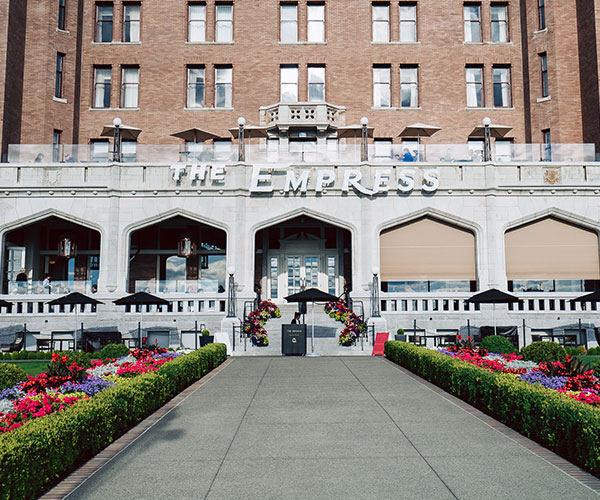 |
Overlooking the Inner Harbor in Victoria, Canada, the Fairmont Empress has played host to royalty, celebrities, and international dignitaries ever since it opened in 1908. The stunning gardens were developed soon after opening. The first head gardener, Fred Saunders, joined the gardening team in 1908 as an assistant and devoted his working life to the garden's perfection. The gardens he developed for the Empress hotel were reminiscent of the grounds of an English country estate, with climbing wisteria and pergolas entwined with perfumed roses. He raised 20,000 sq ft of glass greenhouses, where he grew annuals, perennials, and tropical plants including orchids. His successor, Art Sanders, built on Saunders’ original plan. Every year, 125,000 plants are set out in beds around the hotel, including 3,000 begonias, 2,600 chrysanthemums and 3,000 brick-red geraniums. Sanders liked to boast that these were descended from six cuttings from the gardens of Buckingham Palace. Today, guests can unwind with a leisurely walk through their famous flower-filled grounds, lined with blooming beds flitting with butterflies and well-manicured greenery that are maintained year-round by their hardworking gardening team. The garden also features 10 bee colonies during the summer months. The bees help pollinate the flowers in the garden, the herbs in Fairmont Empress’ rooftop garden, and produce 700 pounds of honey every year. |
Grand Hotel Tremezzo (1910)
Lake Como, Italy
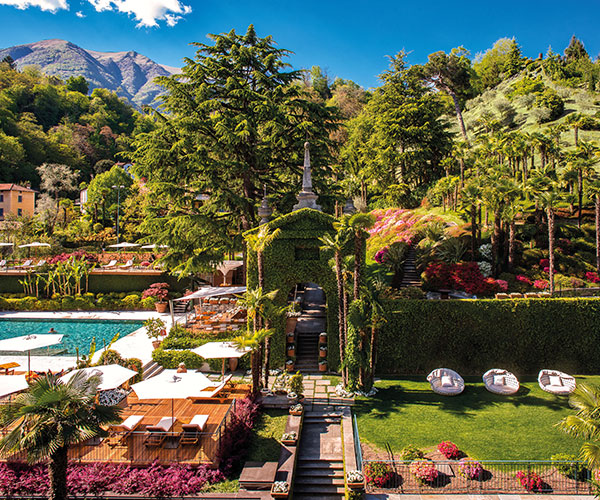 |
Immersed in the beauty of Lake Como and offering a spectacular view of the surrounding Alps, the historic Grand Hotel Tremezzo is a treasured example of the finest authentic Italian palaces. The original building opened in 1910 and it was inducted into Historic Hotels Worldwide in 2011. The hotel is in a beautiful park developed a century ago. The over 20,000-square-foot park features many footpaths and steps that wind gently up the hill to the Belvedere, where it adjoins the neighboring gardens of Villa Carlotta. In the past, part of the garden belonged to the Villa Carlotta botanic garden. Rare ancient magnolias stand among a profusion of palms in this wondrously Riviera-like climate. Clouds of azaleas, tulips and geraniums, hedges of rhododendron and beds of hydrangea provide an alternating palette with expanses of pinks and reds, purples and blues that leave breathtaking glimpses of the lake beneath. There are more than hundreds of ornamental plantings, such as the ficus repens, covering all the Palace facade and the palms. A few centennial trees loom majestically. The abundance of fragrant flowers inspired the hotel to design and market a fragrance: Aqua Como - Sense of Lake. It is the signature scent of the Grand Hotel Tremezzo, which blends the floral fragrance of its lush gardens with the fresh notes of the Lake Como breeze. The flowers can also be found indoors, decorating guestrooms and lounges, and guests are welcome to wander in the garden and pick flowers to create their own bouquets. |
Mayaland Hotel & Bungalows (1923)
Yucatán, Mexico
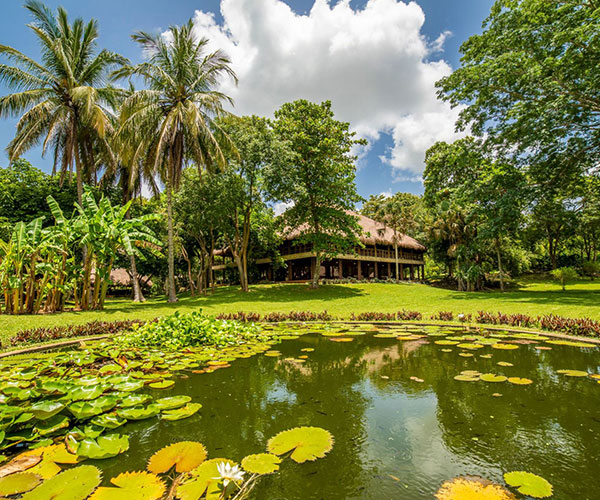 |
The historic Mayaland Hotel & Bungalows is in the heart of the pre-Hispanic city of Chichén Itzá, one of the best-preserved treasures of the Maya culture and a UNESCO World Heritage Site in Mexico’s Yucatán Peninsula. The Mayaland Hotel & Bungalows resort was inducted into Historic Hotels Worldwide in 2015, and it is known for its luxury and Mexican architecture, including rich decoration of local timbers carved by local artists that harmonize with the lush tropical environment. The hotel is surrounded by coconut and banana palm trees, flowering from the resort’s beautiful gardens. They tower over the pools, paths, patios, and spa, giving shade to travelers and staff alike. The Mayaland Hotel & Bungalows gardens have been nurtured by six generations of Barbachano family members since 1923, and occupy over 10 acres of the 550 acres of tropical forest on the hotel’s grounds. There are over 100 varieties of flowering trees, flowers and ornamental plants found in these gardens. The southeastern area of the tropical forest is the most tranquil. The original plantings came from Hacienda Uxmal in the 1920s, including native palm trees and flowering trees of the region. Most predominantly were the plantings of Royal Poinciana trees, known in Yucatán as the Flamboyan (“Flame Tree”). Although of Madagascar origin, these flame-red flowering trees have been associated with the colonial villages of Yucatán since the 18th century. |
Garden Hotel Suzhou (1930)
Suzhou, China
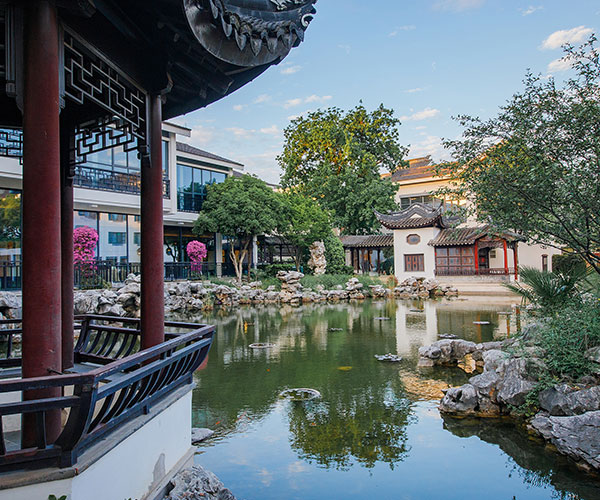 |
Located mere minutes away from the renowned Master of the Nets Garden, a UNESCO World Heritage Site, in Suzhou, China, the Garden Hotel Suzhou has its own fascinating history and magnificent gardens. The hotel estate – inducted into Historic Hotels Worldwide in 2022 – was originally developed during the early 1930s as the personal residence for Chiang Kai-shek’s second wife, Yao Yecheng. Garden Hotel Suzhou features a traditional Chinese garden, installed in 1952. That year, the Garden Hotel Suzhou became an official state guesthouse for Communist Party leaders, foreign dignitaries, and privileged travelers. The garden is an example of treasured, ancient Chinese architecture – a kind of environmental art, which systematically combines artificial mountains, rivers, plants, and structures with the natural landscape. Traditional plantings include maples, laurel, camphor trees, pines, lotuses, and plum blossoms. They change continually with the season and provide both sounds and aromas to please visitors. Guests can take a stroll around the gardens and appreciate their delicately sculpted ponds and rockeries, elegant beams and pillars, and carefully organized trees and flowers. Within this magical garden setting, the heritage villas feature classic Suzhou-style architecture and elegantly designed guestrooms equipped with the latest contemporary comforts. For a classic Suzhou experience, this tranquil retreat is truly a class apart. |
Fairmont Le Château Montebello (1930)
Quebec City, Canada
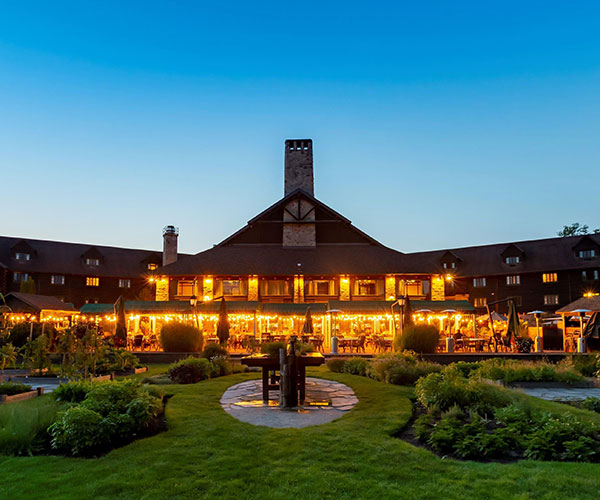 |
In Quebec, Canada, directly on the Ottawa River, sits the grand cedar structure of the Fairmont Le Château Montebello, a historic resort featuring buildings that date back to 1930. The grand chef’s gardens were planted there over 25 years ago between the historic log cabin and the Ottawa River. The gardens have more than 15 varieties of herbs, 10 varieties of edible flowers, and 12 varieties of vegetables. Guests are warmly invited to wander the gardens, especially throughout the summer when the garden is in full swing. Visitors are invited to approach the resort chefs, identifiable by their tall white hats, and ask them about the fresh produce and food at Fairmont Le Château Montebello. Artisans of food, the historic resort’s kitchen team is enthusiastic about fresh produce and happy to speak with guests about the garden. Inducted into Historic Hotels Worldwide in 2017, this outstanding historic destination is an escape into nature that will not require guests to give up creature comforts. |
Sofitel Legend People's Grand Hotel Xian (1953)
Xian, China
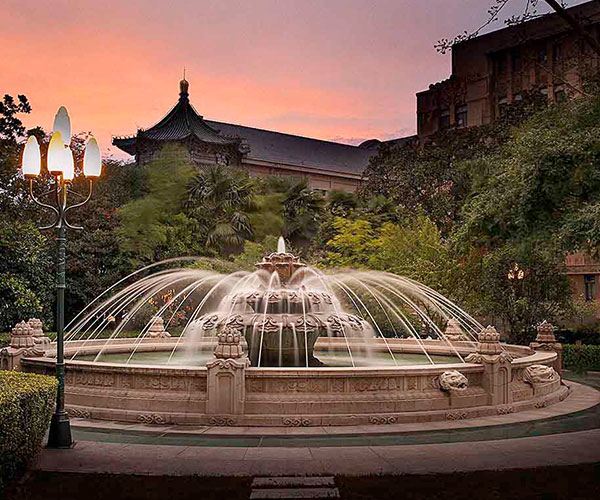 |
A member of Historic Hotels Worldwide since 2018, The Sofitel Legend People’s Grand Hotel Xian is in the ancient city of Xian, China. The beautiful hotel grounds feature 40,000 sq m of lush gardens with over 10,000 trees and plants and 4,000 birds—an oasis within Xian’s urban metropolis. Water features include gurgling clear streams and splashing formal fountains. Guests can enjoy walking through the gardens or sitting in them. The swimming pools and fitness center feature lush, colorful settings as well. Among the thousands of plants are 12 olive trees that were grown from seeds presented to the first Premier Zhou Enlai during an official government visit to Albania. The hotel and its magnificent garden date to 1951, when the land upon which the current hotel stands was designated for the State Guesthouse of Xian. Construction commenced immediately thereafter and lasted for two years. Designed by Chief Architect of the Northwest Institute of Architectural Design, Hong Qing, the hotel’s iconic building was influenced by French, Sino-Russian, and Art Deco architecture styles. Ever since, the stunning hotel and gardens have been enjoyed by leaders from around the world. As the only licensed State Guesthouse in Xian, this hotel has hosted visiting dignitaries and heads of state such as Chinese Marshal Chen Yi, United States Secretary of State Henry Kissinger, Queen Elizabeth II of the United Kingdom, French President François Mitterrand, and King Carl XVI Gustaf of Sweden. |
View the press release version of this content with media contact and background information here.



















